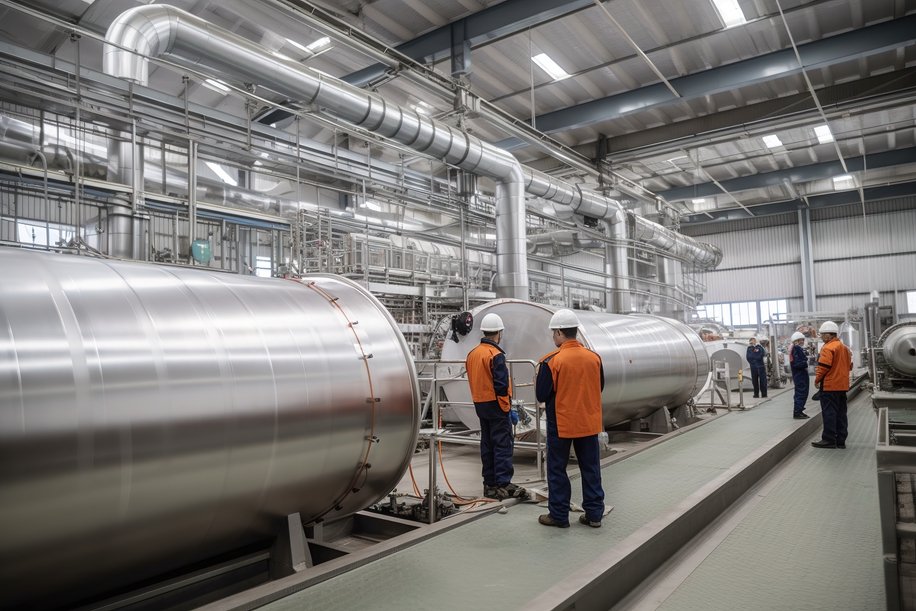Why energy-efficient motors are worth investigating
Motors and drives are typically the biggest energy consumers on your production line and can account for around a quarter of your power usage. Given the rising energy costs and the focus on reducing carbon emissions, it makes sense to ensure they operate efficiently.
So how do you know whether your motor is running effectively and when it’s time to consider energy-efficient alternatives?
What makes a motor inefficient?
Efficiency can be measured by comparing the mechanical power delivered by a motor to the electrical power supplied. For example, an 80% efficiency ratio means the motor successfully converts 80% of electrical energy into mechanical energy, with 20% lost. The lower the ratio, the less efficient your motor is.
Older motors are often more inefficient than newer models for several reasons, including:
• Higher levels of heat dissipation
• Resistance losses in windings and rotor bar
• Magnetism losses in stator and rotor cores
• Friction losses in bearings
• Cooling fan inefficiencies
• Specific materials used in the manufacture of the motor
Another common cause of motor inefficiency is the motor being much larger than the machinery requires, meaning it uses excessive power. Switching to a smaller motor can significantly reduce energy waste and maintenance costs.
Benefits of switching to energy-efficient motors
The biggest benefit of switching to energy-efficient motors is that they consume less energy, which means lower energy bills and a lower carbon footprint.
But energy efficiency isn’t the only benefit. The most energy-efficient motors also tend to be the most modern, which means they have better designs when compared to older models.
They are made with high-quality materials which minimise losses, generate less heat and offer significantly reduced noise output.
Plus, because they are newer, they will also be easier to maintain and less likely to fail, meaning less risk of machine failure and unplanned downtime.
Which motors should you replace first?
You probably don’t want to replace all your motors in one swoop, and you probably don’t need to.
We suggest you begin by replacing any motors that are prone to failure and then assessing the efficiency of your other motors. If you have a high volume of motors, start with the ones with the highest operating hours.
Once you’ve assessed energy efficiency, separate your motors into the following categories:
• Significantly oversized and underloaded
• Moderately oversized and underloaded
• Properly sized but inefficient
You should prioritise those in the first category and replace them at the earliest opportunity. This will increase efficiency and reduce energy consumption.
Depending on the number of motors you have, you may also want to replace those that fall into the second category sooner rather than later. If you have a high volume of motors, energy savings could be significant.
Alternatively, you might let these run to failure before replacing them or look at ways to make them more efficient through power factor correction or the installation of variable speed drives.
For the motors that fall into category three, your decision to upgrade to more energy-efficient models will depend on several factors, such as number of operating hours, current energy prices, and ongoing maintenance costs.

Alternatives to motor replacement
If your motors are running at standard efficiency, replacing them immediately might not be the most cost-effective solution. Fortunately, there are other ways to increase your machine efficiency.
Variable Speed Drive – VSDs convert the incoming electrical supply into a variable frequency and voltage output, allowing the motor to alter speed and torque as required. This can cut energy consumption by around 50%.
Power factor correction (PFC) – PFC reduces the amount of wasted energy by reducing the load on the electrical distribution system. Capacitors can be added to individual motors, automatically switching in or out of the circuit to counteract the inefficient negative effects.
Voltage optimisation – voltage optimisation helps manage the energy coming into your plant, allowing you to control and manage the voltage and distribute the correct amount of power to equipment as required. While this won’t necessarily increase the energy efficiency of individual motors, it will increase the overall energy efficiency of your factory.
Maintenance – motors in poor condition will not run at optimal efficiency. It is important to ensure your motors are cared for correctly, with a regular service and maintenance programme and use of high-quality lubricants and oils. Replace damaged components quickly to prevent them from putting unnecessary strain on other components.
Software – install a predictive tool to monitor equipment and predict failure so you can replace machine components before they become an issue, preventing unnecessary energy drain.
Get started with our free energy reduction audit
At AES, we specialise in providing electrical services to manufacturers with a focus on energy reduction and will help you select the best solutions for your factory.
We offer a free energy reduction audit to help you understand where you can make the most significant impact and which energy-saving solutions are right for you.
After completing our assessment, we’ll provide you with a full report detailing energy consumption savings and the real cost savings to your business.
Our goal is to help you reduce energy consumption in the most appropriate way so you can generate a return on investment as quickly as possible.
Contact us to find out more or book your free energy reduction audit.

Guide – Electrical Contracting
Proactive electrical maintenance to minimise production downtime and eliminate inefficiencies
Read more
Guide – Safety Compliance
Ensuring workplaces are safe environments where all staff are protected
Read more
Guide – Energy Reduction
Minimising your carbon footprint whilst improving your work environment and reducing costs.
Read more
Guide – Control & Automation
Modernising production operations to maximise output efficiencies.
Read more
Our guide to building energy management systems
Building energy management systems (BEMS) are systems that allow you to monitor, control, and optimise the energy used within your building. The phrase building energy management system (BEMS) is often used interchangeably with the phrase building management system (BMS), but there are some differences. A BEMS is focused on energy-related systems such as lighting, heating, […]
Read more
How far does power travel and what impact does distance have on performance
It’s easy to take our electricity supply for granted. We flick a switch and instantly have light or power. We don’t even think about it unless there’s an issue or an outage. But when there is an issue or outage, the impact can be significant. For manufacturers, even the smallest change in power can make […]
Read more
Why visibility of the production process is so important
Operational excellence, efficiency and quality are top priorities for almost every manufacturer worldwide. These things lead to improved productivity, happier customers and reduced waste – all of which result in increased profits. Visibility of the production process is the key to achieving these things. And manufacturers now have access to technology that can provide real-time […]
Read more
Will security lighting help to protect my staff?
Looking after the safety and well-being of employees should be a priority for any business. And while it’s not possible to mitigate every risk, there are measures you can take to improve their safety and security. One measure that is often overlooked is the installation of security lighting. When daylight disappears, visibility is reduced, increasing […]
Read more
Top 5 considerations when comparing electrical quotes
Budget is always a factor when you’re considering any type of upgrade, revamp, or maintenance work within your factory. But when it comes to electrical work, you have to consider more than just money. Don’t rush into accepting the cheapest electrical quotes without knowing exactly what you’re getting. Electrical work is not an area where […]
Read more
What is the role of companies in reducing our carbon footprint?
We should all be taking responsibility for protecting our planet and a big part of that is reducing our carbon footprint. But while it falls to all of us to do our bit, there is additional pressure on manufacturers, especially those with high carbon emissions. As an absolute minimum, these companies should ensure compliance with […]
Read more

